vinylgroover
New member
Guys, i changed the way i worked my calves recently and have experienced excellent results.
The change amounts to using partial reps or strongest range reps if you like and the results have been very encouraging. I don't break parralel on any exercise, and isntead focus on the contraction at the top. For years i have been working calves in a full range of motion with no results.
If it works for calves, can it work for other bodyparts. I have not read extensively on the theory of strongest range reps. Does anyone else here believe in the effectiveness of strongest range reps as opposed to working a muscle through it's full range of motion?
The change amounts to using partial reps or strongest range reps if you like and the results have been very encouraging. I don't break parralel on any exercise, and isntead focus on the contraction at the top. For years i have been working calves in a full range of motion with no results.
If it works for calves, can it work for other bodyparts. I have not read extensively on the theory of strongest range reps. Does anyone else here believe in the effectiveness of strongest range reps as opposed to working a muscle through it's full range of motion?


 Please Scroll Down to See Forums Below
Please Scroll Down to See Forums Below 










